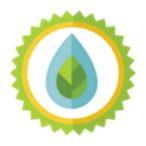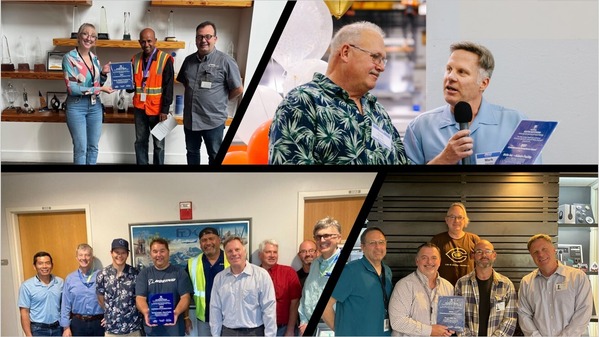 King County Industrial Waste Program Newsletter - Fall 2024
In this issue
- Annual estimate letters coming
- Update on the mandatory comprehensive industrial user survey
- Envirovation applications due Nov. 30
- Commitment to Compliance award presentations
- Keeping your pH probe calibrated can save you time and money
- King County is hiring
- Meet the tiny helpers in wastewater treatment
Annual Estimate letters coming
 |
|
The King County Industrial Waste Program (KCIW) is currently working on providing annual estimate letters to companies that pay compliance monitoring & administration (CM&A) fees and/or surcharge treatment fees. You should expect to receive your letters by mid-November. |

All companies must manage their wastewater properly, but only some need permits or formal authorizations to send industrial wastewater to the sanitary sewer. Federal regulations require that KCIW, as a delegated pretreatment program, issue waste discharge permits to all entities considered to be Significant Industrial Users (SIUs). KCIW has hired a consultant to collect data for the 2024-2025 mandatory comprehensive Industrial User Survey. The responses we collect will support King County’s efforts to protect regional water quality and comply with federal requirements.
Collecting information about PFAS
WTD’s West Point NPDES permit requires KCIW to collect information about per- and polyfluorinated substances (PFAS), known as “forever chemicals” from its commercial and industrial user base. Accordingly, the survey will contain questions related to PFAS. The PFAS data will help King County develop best management practices (BMPs) for businesses, which is another permit requirement that the Washington Department of Ecology has placed on WTD’s Industrial Waste program.
The King County wastewater system is the downstream recipient of PFAS, so upstream intervention, or “source control,” is at the forefront of our strategy to keep PFAS out of wastewater and, in turn, out of our regional waterbodies. It’s a shared responsibility among local, state and federal governments, the public, and the chemical manufacturers that produce these toxic chemicals. In short, keeping contaminants out of the system helps reduce cost for King County ratepayers and reduces impacts to the environment and public health.
We’ll continue to work with multiple agencies, including Public Health – Seattle & King County, to take a regional approach to managing contaminants such as PFAS. Addressing these harmful chemicals requires a collective effort, and we continue to collaborate with state and federal partners to support laws, regulations, funding and programs that promote source control and producer responsibility.
|
Reminder: EnvirOvation award applications due Nov 30th
KCIW encourages all permitted facilities to apply for its annual EnvirOvation Award for excellence in pretreatment. For a downloadable application and to learn about the awards criteria, visit KCIW’s awards and recognition page.
|
|
 |
 Congratulations again to our 2023 Commitment to Compliance Award recipients. These five facilities have received a Gold Award for five consecutive years! Pictured above beginning clockwise from the top left:
- Exotic Metals Forming Co.
- Skills Inc. - Auburn Facility
- Boyd GMN Inc.
- Boeing Company - Plant 2 Facility
- National Industrial Concepts (not pictured)
Learn more about our recognition program and see all of the facilities that met or exceeded their wastewater discharge permit requirements in 2023.
 Don’t forget to regularly calibrate your pH probes and replace them on a maintenance schedule based on manufacturer recommendations. One of our customers recently discovered that their system was adding more caustic solution than normal. Once they calibrated their probe, it reduced the amount of caustic they needed to add, reducing their costs. You should calibrate your probe once a week at a minimum. Remember that probes become less effective over time, so plan ahead for replacement.
King County is hiring
 Our WTD workforce is growing, and we know diversity is key to our success in building the next generation of talent. Are you or someone you know interested? Check out WTD’s career opportunities.
Microbes are the unsung heroes in our wastewater treatment plants, breaking down pollutants and cleaning the wastewater. Hundreds of species of microbes, including bacteria and protozoa like the stalked ciliates (pictured above), as well as rotifers and nematodes, are essential for maintaining a stable and healthy microbial ecosystem.
With their graceful, inverted tulip or bell-shaped bodies, the hair-like cilia of stalked ciliates create a water vortex around their mouths to feed on bacteria-rich wastewater. To keep these “bugs” healthy, they need a good supply of oxygen, which we provide in our aeration tanks.
The stalked ciliates (and other beneficial microbes) get to work by eating and metabolizing the organic material back down into the basic components: nitrogen compounds, carbon dioxide and water! Afterward, the water is disinfected before it’s piped to Puget Sound.
These microbes do wonders with organic material, but they struggle to breakdown pollutants such as heavy metals, PCBs (polychlorinated biphenyls), pharmaceuticals, PFAS (Per- and Polyfluoroalkyl Substances) and microplastics. This makes the work of KCIW and our partners in industry so important in keeping our local waterbodies clean. Pretreating wastewater helps protect workers, local and regional sewer and treatment infrastructure, and the products of the treatment process, such as water that is released back into the environment and biosolids that are used to grow plants and trees.
Curious to learn more about the fascinating process of wastewater treatment? You can go on a tour of one of our facilities! Check our Events page for upcoming treatment plant tours to learn how we protect public health and the environment.
|